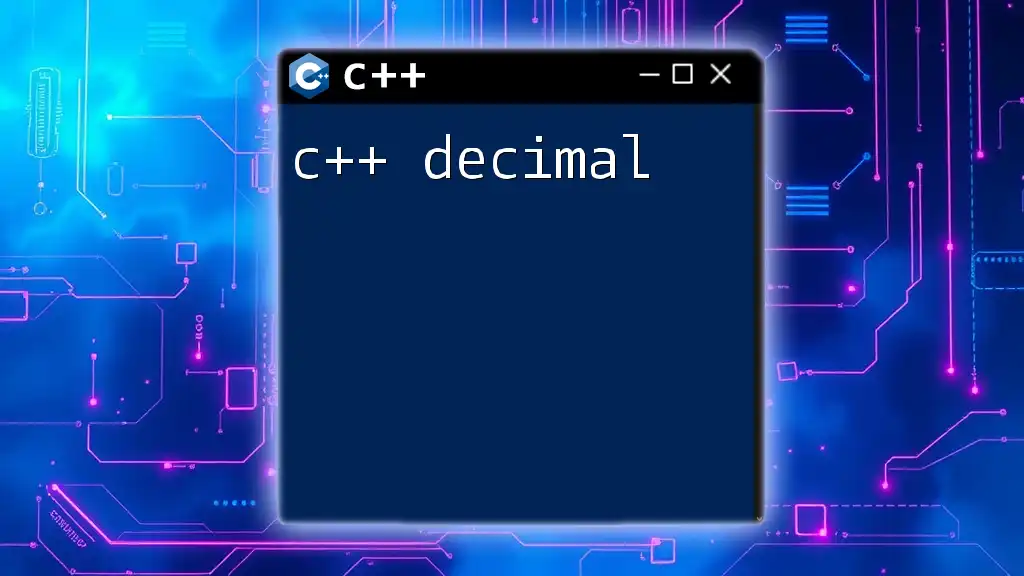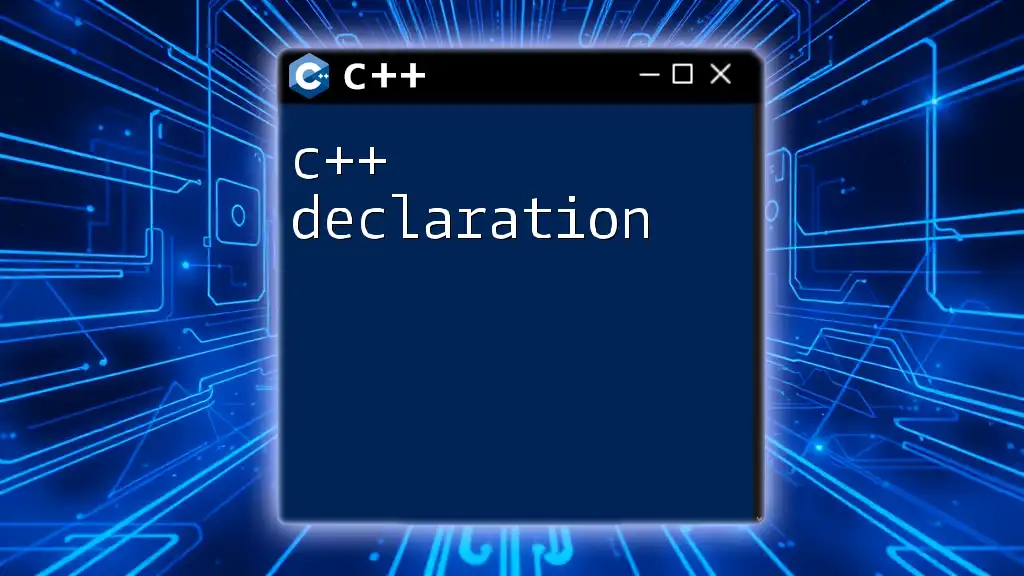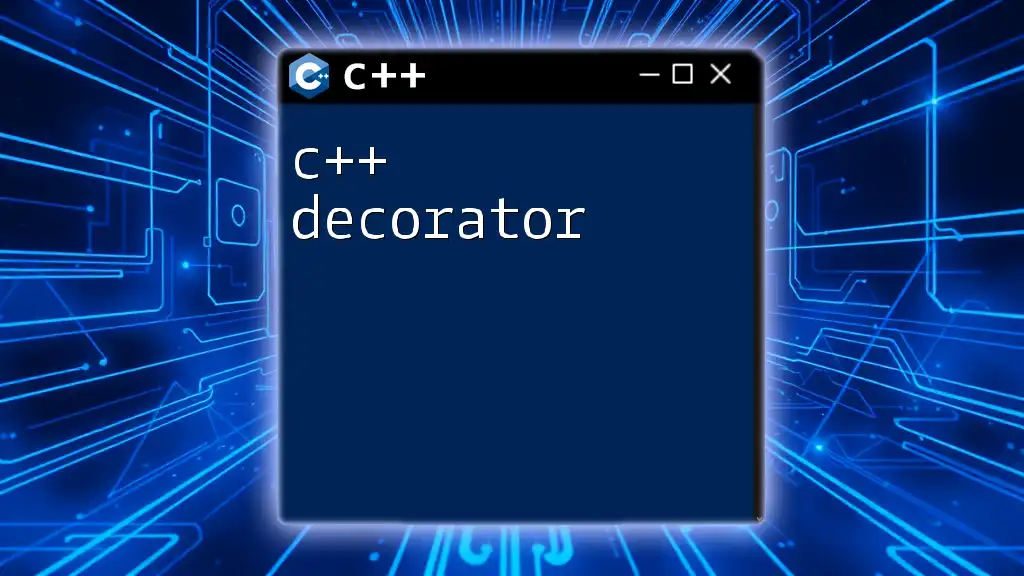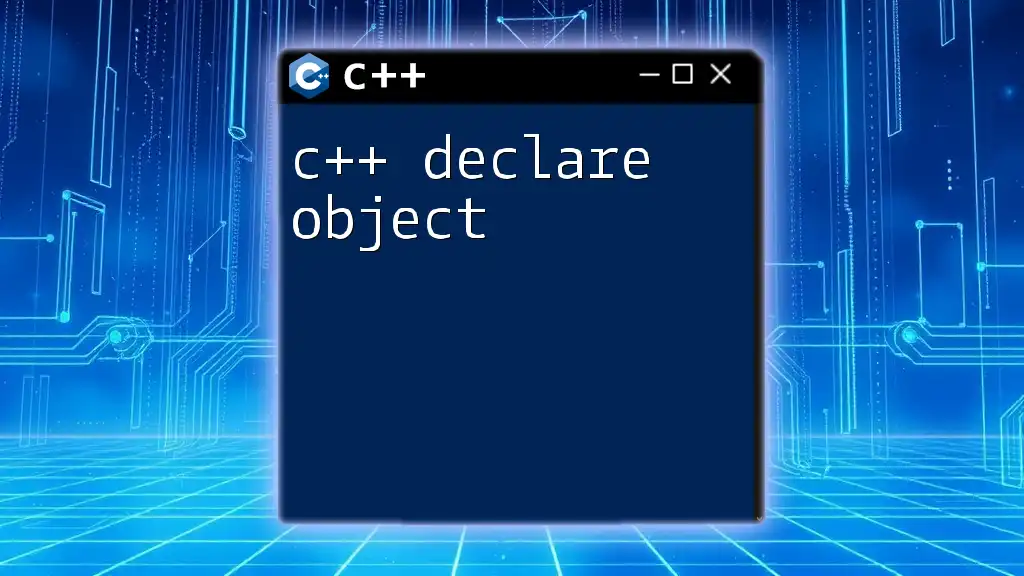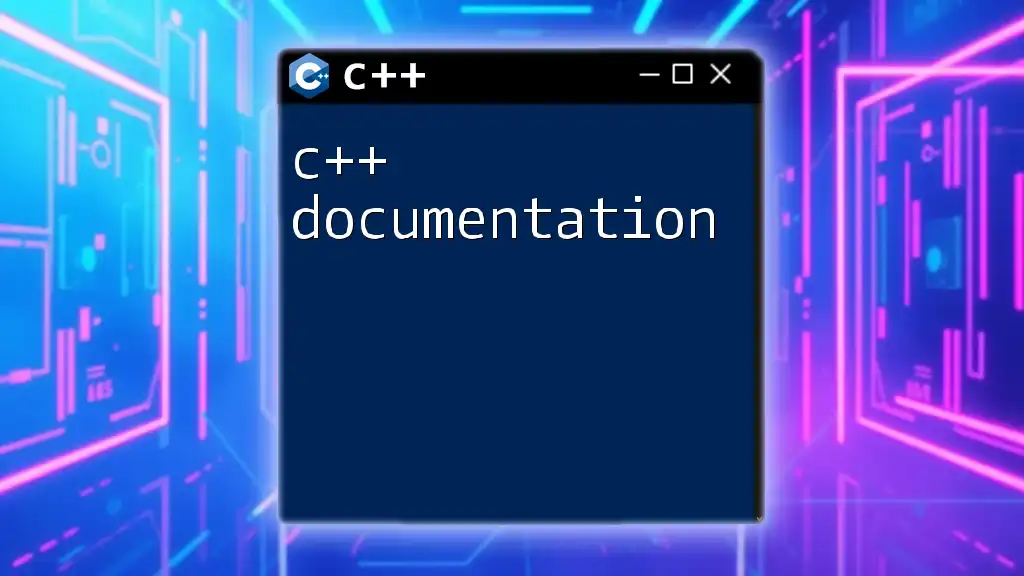In C++, the decimal data type is typically represented using the `float` or `double` types for storing decimal values with varying precision.
Here’s a code snippet demonstrating how to define and use a decimal value:
#include <iostream>
using namespace std;
int main() {
double decimalValue = 3.14; // Declare a decimal value
cout << "The decimal value is: " << decimalValue << endl; // Display the value
return 0;
}
Understanding C++ Decimal Data Types
What are Decimals in C++?
Decimal numbers are the foundation of many real-world calculations, particularly in fields such as finance and engineering. In C++, decimals represent numbers that have a fractional part, allowing for precise calculations needed in various applications.
The importance of decimals in programming cannot be overstated. They are essential for accurately representing values like currency, measurements, and other quantities which require precision. When handling calculations involving decimals in C++, understanding the nuances of decimal types is crucial for creating reliable applications.
Overview of Floating-Point Types
Introduction to Floating-Point Representation
In C++, decimals are typically stored as floating-point types. These types use a scientific notation approach to represent real numbers in memory, accommodating a vast range of values with varying levels of precision.
Common Floating-Point Types in C++
C++ provides several built-in floating-point types which include:
-
`float`: This is a single-precision floating-point type, typically using 32 bits. It is sufficient for many basic operations but may lead to precision issues in more complex calculations.
-
`double`: This is a double-precision type using 64 bits, allowing for more precision and a wider range of values compared to `float`. It is often the preferred choice for most calculations involving decimals.
-
`long double`: This type provides an extended precision, often using 80 or 128 bits, depending on the implementation. It is used when a very high degree of accuracy is required.
Differences Between Float, Double, and Long Double
When choosing between these types, it's important to understand their differences:
-
Precision and Memory Usage: `float` typically offers about 7 decimal places of precision, while `double` can provide approximately 15 decimal places, and `long double` can go even further, depending on the architecture.
-
Choosing the Right Type: For most applications, `double` is the go-to choice, as it balances precision with performance. However, for high-accuracy computations, consider using `long double` at the cost of increased memory usage.
Working with Decimal Numbers in C++
Declaring Decimal Variables
To work with decimal numbers in C++, you first need to declare your variables. The syntax is straightforward, for example:
double price = 19.99;
float temperature = 36.6f;
Here, `price` is declared as a `double` and `temperature` as a `float`. Note the `f` suffix for float literals, which ensures that the decimal number is treated as a `float` instead of a `double`.
Performing Arithmetic Operations
Once you have your decimal variables, you can perform arithmetic operations just like you would with integer types. For example:
double num1 = 5.5;
double num2 = 2.2;
double sum = num1 + num2; // sum = 7.7
In this snippet, we calculate the sum of two decimal numbers. The result can be printed or used in further computations.
Type Casting Between Decimal Types
At times, you may need to convert between different floating-point types. This can be performed implicitly in some cases, but explicit casting can help avoid potential issues:
int intValue = 10;
double doubleValue = static_cast<double>(intValue); // Converts int to double
In this example, we use `static_cast<double>` to ensure that `intValue` is safely converted to a `double` type.
Special Considerations with Decimal Arithmetic
Rounding Errors
A critical point when dealing with decimals in C++ is the potential for rounding errors. Due to the way floating-point numbers are represented in binary, certain decimal values cannot be precisely represented, which can lead to unexpected results in calculations. For example:
double a = 0.1 + 0.2; // May not equal 0.3 due to precision limits
This is a common pitfall; if you check the value of `a`, it may not exactly equal `0.3`. Understanding this issue is vital for developers working with decimal calculations.
Using std::setprecision for Formatting Output
To format decimal output neatly, you can use the `<iomanip>` library, which provides the `std::setprecision` function. This allows you to control how many decimal places to display:
#include <iostream>
#include <iomanip>
std::cout << std::fixed << std::setprecision(2) << a; // Formats to 2 decimal places
The `std::fixed` manipulator modifies the output to ensure the displayed value keeps a fixed decimal notation.
Best Practices for Handling Decimals in C++
Avoiding Common Pitfalls
To handle decimals effectively, you should be aware of common pitfalls such as:
-
Avoid Comparing Floating-Point Numbers: Rather than checking for direct equality (e.g., `a == b`), use a threshold for comparison, such as:
if (fabs(a - b) < epsilon) { // Considered equal } -
Consider Using Integers for Currency: When working with currencies, multiply everything by 100 (or another factor) and use integer types to avoid precision issues.
Using Libraries for Precision
If your application requires extreme precision, consider integrating libraries like GMP or Boost Multiprecision. These libraries allow for handling arbitrary-precision arithmetic, ensuring that you can work with decimals without running into the limitations of native types.
Conclusion
In summary, understanding and correctly utilizing C++ decimal types is fundamental for accurate and effective programming. By knowing the differences between `float`, `double`, and `long double`, along with best practices for arithmetic, type casting, and output formatting, you can mitigate common pitfalls and create applications that handle decimal computations robustly.
As you continue to develop your skills in C++, use this knowledge as a foundation and explore further resources to deepen your understanding of decimal handling and its importance in programming.

